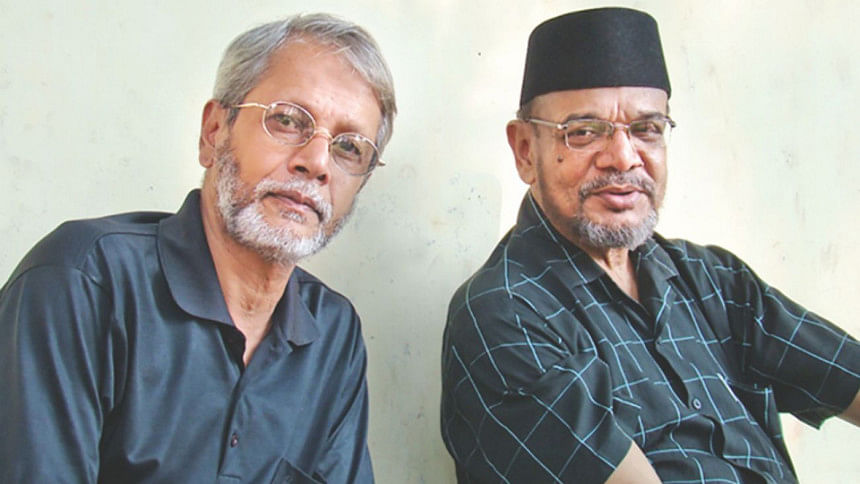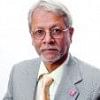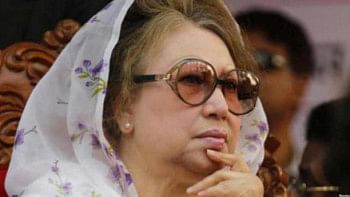A life well lived

Going down can be as arduous as going up. Treading down the stairs of the Dhanmondi Hospital on the Tuesday morning of November 14 after meeting his family on the fifth, I paused momentarily, more so mentally, when I reached the first floor, knowing that his dialysis was proceeding in some room. I made no sincere effort to look for the room or him; there was eerie trepidation lurking in the half-lit soulless space. His wife Helu and brother Dr Ramiz had said his dialysis was a 72-hour regime. Let it go on then, we can obviously meet later.
Wednesday morning, I was on my way to Sirajganj on a prescheduled visit. Amid the mizzle of an overcast day, at 10am, there was a text message from Ar Najm-ul Latif Suhayl… At around noon, his daughter Tumpa rang to confirm, "Chachchu, we are starting for Chittagong." They were taking him to his own city.
My thoughts were racing—driving from his Khulshi house to Pahartali masjid for Jumma prayers, visiting Purbokone office at midnight with the editor, long hours of gossip, sumptuous home meals, time at Chittagong Club, site visit to the new premises of Chittagong Metropolitan Chamber, stopping for photographs at famed musician Satya Saha's dilapidated but historical brick house on the outskirts of Raozan. He wanted to publish a documentation of architectural relics of his district, and knowing his expertise with the camera and no fancy talk, I believe he must have made significant progress towards that end.
We have lost a dearest friend, a Buet classmate (1974–79) bearing roll no. 1, not because he was first in class, about which he was as serious as a person with dozens of other interests could be, but because he was first in line to take admission. That was Taslim, serious about things that mattered. He almost never missed a design submission deadline, he would never fail a library return date, and he maintained the "good boy" image at the department of architecture and his Suhrawardy Hall of residence. He knew how to walk the straight line in spite of wavering at his choice to enjoy life to the fullest till he was slowed down by Non-Hodgkin lymphoma in 1994.
I remember him breaking the news one late night. "I fear something has happened to me, I have not told my family yet," he said while we were in his car, Taslim driving. Once, after researching online all night, he good-humouredly announced the next morning, "I can live for another ten years," but Taslim braved it all and head held high doubled his own approximation.
Ten years later it was a different story. Taslim was then diagnosed with adenocarcinoma of the stomach, the treatment for which led to his meals being administered via a tube external to his body. Whenever he came to Dhaka, especially for Newspaper Owners Association of Bangladesh (Noab) meetings, he always declined my invitations.
Once I was invited to his Dhaka Club room. As his wife and I were having dinner, Taslim poured two bottles of liquid meal into a funnel. He did join us briefly to purse with his lips a chicken bone before discarding it.
He made public his passion for architecture early when as a student he wore an eraser around his neck, but mostly by a ragged t-shirt he had designed that said, "Consult an architect." At a time when we were more inclined to frolicking, grooving architectural studies and hunting grades, Taslim went notches higher with his hallmark maturity that ours was a profession that thrived only on clientele.
His family was not totally at ease with him taking up a job as an architect in distant Dhaka. His family business beckoned him, more so his parents, who, because of their close-knit family, had a stranglehold on his life plan. He soon moved to an architectural office in the port city, but despite his design dexterity he was not destined to remain—or unknown to him, that was his family's Plan A.
Banking on their family's longstanding Signet Press, and in order to fulfil somewhat of a media vacuum, the Chowdhurys moved to establish a Bangla daily, Purbokone, in 1986. Taking over from the first editor KG Mustafa three years later, Taslim established himself as a bold editor. His contemporary ideology, journalistic acumen, authoritative control, and innovative planning contributed towards Purbokone remaining the most popular newspaper in the Chittagong region for almost three decades.
In 1994 Purbokone was the only newspaper in the country to publish in the morning the photograph of the World Cup Finals happening the night before with the help of TV grab, a technique uncommon then to Bangladesh media circles. The newspaper pioneered computer composition and, before colour separation reached Bangladesh, printed digitally separated colours on tracing paper, combining which achieved the effect of four-colour production. No doubt his creativity was paying dividends.
He inherited his business shrewdness from his father Mohammad Yusuf Chowdhury, a quiet thinker, and forthrightness from his mother Zohra Begum Chowdhury, who held the entire family under her wings. Taslim held several important positions in business chambers and associations, but one could hardly tell from his comportment of simplicity. His active involvement spread from Chittagonian language to stock exchange, dairy farm to veterinary and animal science, corrugated carton to diabetic association, school committees to village samity, press club to kidney foundation, golf to boat club. Taslim was an executive member of Noab.
Owing to his continued involvement with architecture, Taslim was nominated member of Chittagong Development Authority's (CDA) Urban Development Committee. He took his professional obligation to another level when, despite his illness, he chaired the Chittagong chapter of the Institute of Architects Bangladesh (IAB) during 2009–2016.
Taslim also had classmates at St Mary's, St Placid's and Faujdarhat Cadet College. He was president of the Chittagong chapter of Old Faujians Association, a parallel I proudly share as a former president of Jhenaidah Cadet College. He is acknowledged as the dreamer and prime mover of the recently-founded Cadet College Club of Chittagong.
Guitarist Taslim would tell stories of his association with "Souls", not boastfully though, although he was instrumental in the formation, fusion and fame of the Chittagong band in the 1970s. He blended well society and culture, commemorating, for instance, Kazi Nazrul Islam's third visit in 1933 to his village with an elegant memorial done in black granite.
A loving husband to Helu, an iconic father to Tauseef, Tumpa and Taukeer, a luminary brother to Jasim and Ramiz, and my station at Chittagong for 43 years, Dosto, saying you will be profoundly missed is an understatement. Our world changed for good since 6:45am on November 15, 2017.
Dr Nizamuddin Ahmed is a practising architect, a Commonwealth Scholar and a Fellow, a Baden-Powell Fellow Scout Leader, and a Major Donor Rotarian.





Comments